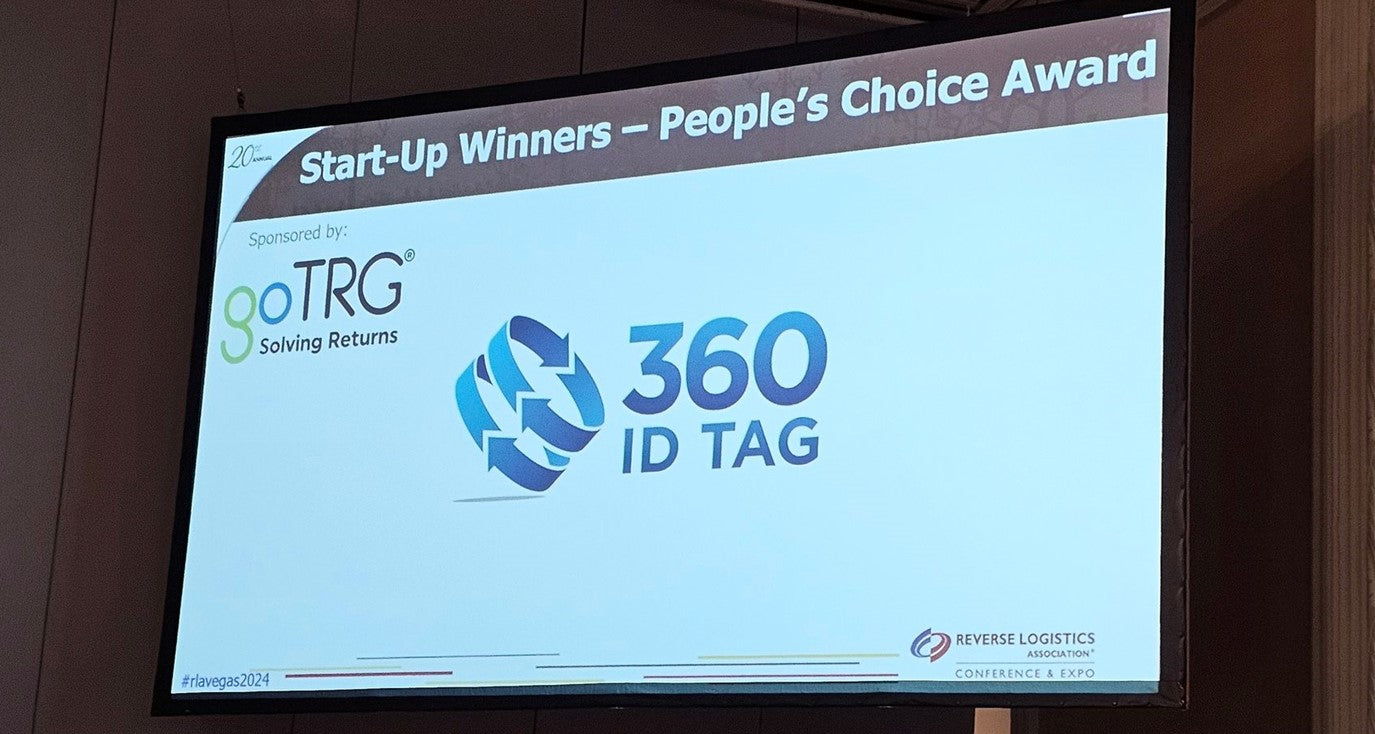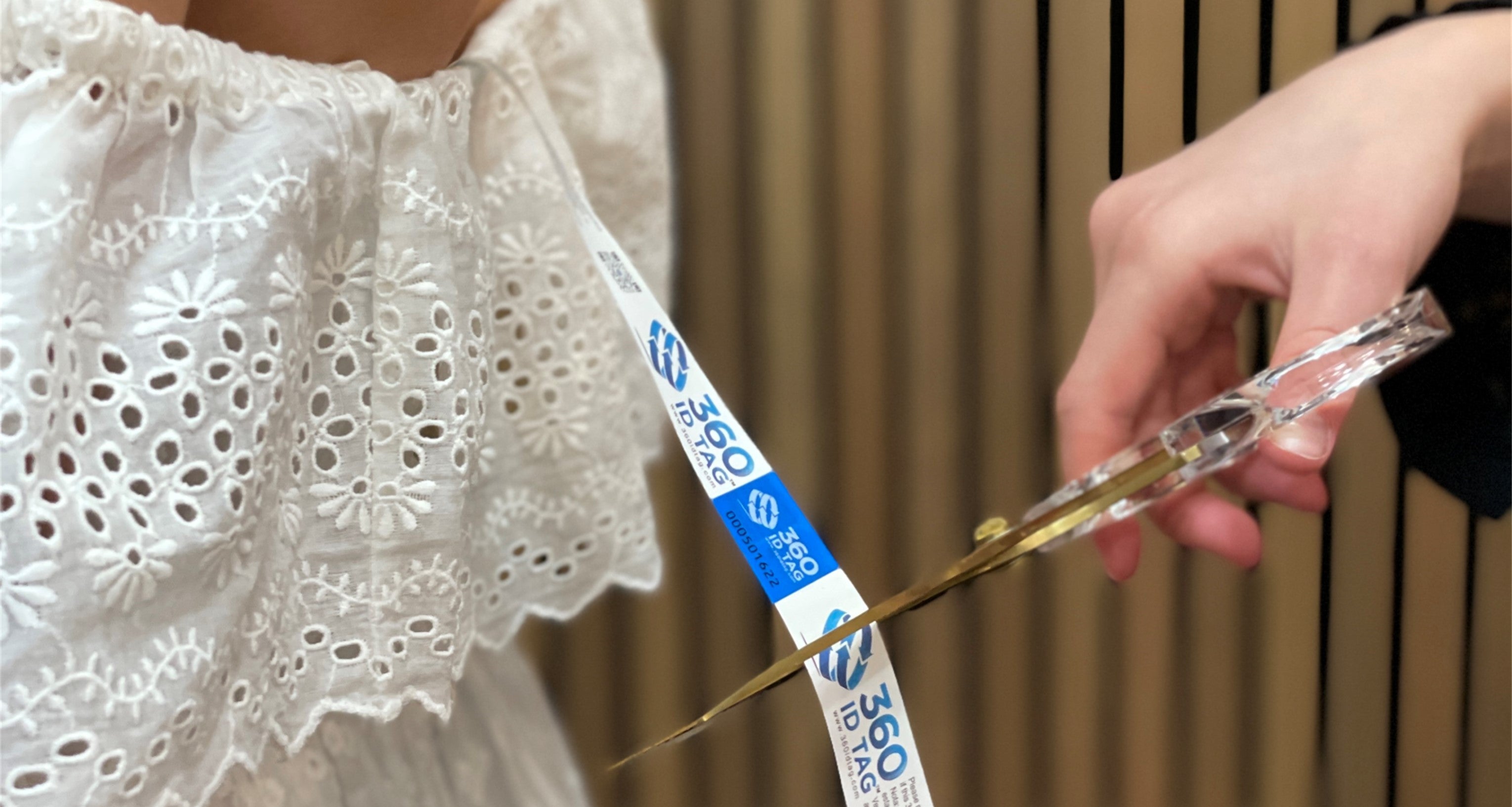
THE TAG BLOG
A Comprehensive Guide To Adding A Return Tag To Clothing
JULY 2021
PROTECTION AGAINST THE INEVITABLE RISE OF E-COMMERCE RETURN FRAUD
One of the most pervasive challenges in e-commerce is returns. According to the National Retail Federation (NRF), 30% of all online purchases are returned, with clothing returns closer to 40%.
Couple high return rates with advice from industry experts who advocate the need for a seamless returns experience that includes a free return shipping label along with extended periods for returns, and the balancing act becomes more precarious for e-commerce businesses.
While e-tailers have followed this tried and tested advice, it has opened the floodgates to deceptive practices by dishonest buyers. The seamless, no-questions-asked e-commerce returns experience has some customers emboldened by the faceless nature of returns. Compare this to a retail setting where items are presented in person and questions can be asked by a manager; the e-commerce returns procedure involves:
- Checking a box on a form.
- Resealing a shipping package.
- Waiting for the full refund.
While returns are unavoidable, proactively protecting clothing from fraudulent returns is possible. Let's take a closer look.
Why add a secure return tag to clothing?
What forms of return fraud are preventable?
Ways to add a secure return tag
WHY ADD A SECURE RETURN TAG TO CLOTHING?
Like brick-and-mortar stores implemented security tags back in the 1960s to prevent shoplifting, similar challenges plagues e-commerce stores and marketplace sellers in 2021. However, these harder-to-detect forms of return fraud initiated in people's homes cannot be managed with hard plastic tags and store alarm or video detection systems.
In their most recent Consumer Returns report from 2020, the NRF and Appriss Retail reference that:
"Receipted returns are a hidden risk from behaviors like shoplifting, collusion, wardrobing, and more."
The NRF also reports that $7.7B of online returns across all categories are fraudulent, giving e-commerce merchants every reason to add a secure return tag to clothing.

The 360 ID Tag is not a fashion accessory! Shown here is the Classic Loop Pack - 22mm.
Another significant reason for tagging clothing lies in what consumers have come to expect when buying goods online – free shipping and free returns. The costs associated with these unrecoverable fees coupled with other order processing expenses give further reason to diligently manage returns and deterring those that are fraudulent. Additionally, the merchant who accepts the return and issues a full refund must absorb:
- The labor and materials costs of initial order processing
- The cost of shipping
- The cost of return shipping
- The labor costs of return inspection
- The potential devaluation of the item due to wear or use
- The future lost sale of the same article to an honest customer
- The sale of the item at a discount if it is now out of season
- The sale of the item to an off-price retailer if it shows signs of wear
- The environmental cost of disposal of the item if it is in an unsellable condition
Even the most attentive e-commerce store may miss fraudulently returned merchandise, mistakenly restock the item, and resell the item to an unsuspecting consumer. When businesses make insufficient efforts to protect their products from return fraud, they are at risk of unknowingly endangering their reputations with honest customers.
WHAT FORMS OF RETURN FRAUD ARE PREVENTABLE?
There will always be cases of buyer's remorse when dealing with returns. Standing in the returns lineup at a brick-and-mortar store can offer great insight into the excuses consumers come up with when wanting to return an item.
Switch to e-commerce, and there is no need to explain anything to anyone face to face, escalating the challenges of returns management. Typically, inside the shipping box will be a returns form and shipping label, a consumer demanded online shopping feature. All a consumer does is tick a box, pop the item back inside and ship it back without the need for explanation. This systematic approach to returns has been working for years, and consumers are used to the procedure. However, circumventing this returns honor system is easily achieved for dishonest buyers.
Those with an utter lack of remorse for taking advantage of generous return policies can work the system by engaging in these types of e-commerce and marketplace return fraud:
1. Wardrobing / Wear and Return
Wardrobing, or wear and return fraud, happens when a product is deliberately purchased to be used only once or twice and is then returned for a full refund.
2. Counterfeit Product Switches
With the quality of counterfeit items increasing, blatant switching of a genuine product for a fake is becoming harder to detect.
3. Tag Tucking
Tag tucking is when an item of clothing is worn with the tags still attached but tucked away out of sight. With most clothing hang tags attached to the inside of garments, tag tucking is easy to accomplish without evidence.
4. Tag Switches or Retagging
For under $10, consumers can purchase a tagging gun from Amazon and retag thousands of items for less than a penny a time. Removing and replacing tags secured with a plastic barb is effortless and repeatable on a grand scale, as most kits come with 1000 or more barbs.
5. Snap and Send Back / Social Media Wardrobing
Social media has been a critical driver in the snap-and-send-back trend. Influencers, fashion bloggers, and fashionistas succumb to social media pressures to not be seen in the same outfit twice to maintain their status and engagement with their followers. Short of having the budget for a continually revolving wardrobe, clothing is worn merely for a post and fraudulently returned.
WAYS TO ADD A SECURE RETURN TAG TO CLOTHING
Let's look at some of the common ways to protect clothing from the above return abuse cases, like wardrobing or wear and return, by adding a versatile, secure return tag.
AN E-COMMERCE LOSS PREVENTION SOLUTION
Considering the growing retail shrinkage problem that has accelerated rapidly alongside the explosion of e-commerce and marketplace sales, it is natural for merchants to seek solutions like these. The key for e-tailers is to implement a balanced loss prevention solution, offering the same protection as traditional store security tags without sacrificing customer experience or implementing harsh return policies.
E-commerce businesses can continue to deliver good customer service with consumer-demanded flexible return policies and, at the same time, protect their merchandise and profits. The above solutions, using the 360 ID Tag, strengthen commonly used return policies, which traditionally site that items must be unworn with tags still attached.
The 360 ID Tag still allows the customer to inspect and try on the item at home at their leisure, not wear it out and return it for a full refund. After committing to keeping the garment, the buyer removes the return tag with scissors or peels back the tamper-evident security seal.
"I've been using this product for over a year. I can say that it definitely encourages customers to return the item unused, with tags. It is worth the cost and extra time required to place the tag."Margaret
Returns are a complicated issue for stores, but there is nothing lost by discouraging customers who engage in return fraud. We know it's possible to minimize returns without sacrificing customer loyalty; we created the 360 ID Tag so that you can do it as well.
Adding a 360 ID Tag to a dress. Customers can still try the item on with the return tag attached.
Want to talk return tags, have questions, or need some advice? Add a comment below, or send me a message at info@360idtag.com, and I’ll be happy to help you out.
CHELSEA DUHS - FOUNDER 360 ID TAG
Find the right 360 ID Tag pack for your business
We offer a variety of 360 ID Tag packs, with different combinations of return tag material and tamper-evident security seals. You can also create a custom combination to fit your specific needs. Browse our 360 ID Tag products and select the return fraud solution that best suits the types of products you sell online.
LATEST ARTICLES
Tackling Fraudulent Returns: Survey Confirms Wardrobing as the #1 Culprit
Today, return fraud has evolved into a costly and ongoing challenge for businesses. Wardrobing, where customers buy merchandise, use it briefly, and then return it for a full refund, is particularly disruptive. Secure Authentication Brands recently conducted a survey to understand the impact of return fraud and gather insights from business leaders on their most pressing concerns. Here's what we found and how our anti-return fraud tagging solution is helping companies turn the tide.
View DetailsRevolutionizing E-Commerce Returns With an Anti-Wardrobing Tag
At the recent Reverse Logistics Association's 2024 Startup Competition, 360 ID Tag stood out among a field of innovative contenders, showcasing their mission to combat return fraud, specifically the insidious practice of "wardrobing." Founder Chelsea Duhs delivered a compelling pitch that resonated with both the audience and the judges.
View DetailsE-commerce's New Secret Weapon for Return Fraud Prevention
Is your e-commerce store plagued by return policy abuse over the long holiday shopping and return season? Extended return windows until the end of January and unscrupulous consumers engaging in wear and return fraud have businesses looking for solutions. Learn how to prevent wardrobing and other forms of return fraud with secure anti-return fraud tags.
View Details















